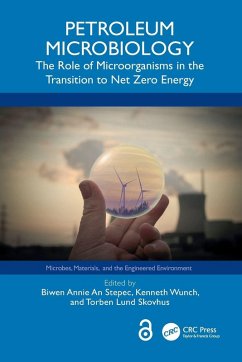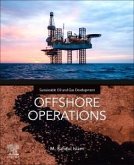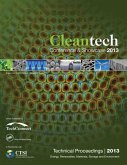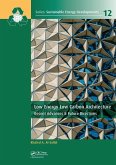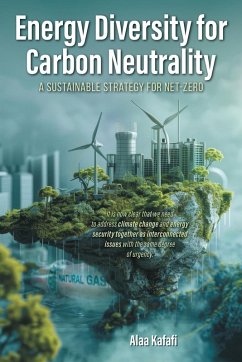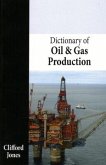Petroleum Microbiology
The Role of Microorganisms in the Transition to Net Zero Energy
Herausgeber: An Stepec, Biwen Annie; Skovhus, Torben Lund; Wunch, Kenneth
Petroleum Microbiology
The Role of Microorganisms in the Transition to Net Zero Energy
Herausgeber: An Stepec, Biwen Annie; Skovhus, Torben Lund; Wunch, Kenneth
- Broschiertes Buch
- Merkliste
- Auf die Merkliste
- Bewerten Bewerten
- Teilen
- Produkt teilen
- Produkterinnerung
- Produkterinnerung
The role of the microbiome and its potential impact on future energy systems remains an open question. Petroleum Microbiology: The Role of Microorganisms in the Transition to Net Zero Energy explores technological advances in applied microbiology in the oil and gas sector that can be utilized in its transition to renewable energy systems.
Andere Kunden interessierten sich auch für
![Offshore Operations Offshore Operations]() M Rafiqul IslamOffshore Operations154,99 €
M Rafiqul IslamOffshore Operations154,99 €![Clean Technology 2013 Clean Technology 2013]() Clean Technology 2013116,99 €
Clean Technology 2013116,99 €![Planning and Installing Photovoltaic Systems Planning and Installing Photovoltaic Systems]() Deutsche Gesellschaft Für Sonnenenergie (Dgs)Planning and Installing Photovoltaic Systems280,99 €
Deutsche Gesellschaft Für Sonnenenergie (Dgs)Planning and Installing Photovoltaic Systems280,99 €![Low Energy Low Carbon Architecture Low Energy Low Carbon Architecture]() Low Energy Low Carbon Architecture63,99 €
Low Energy Low Carbon Architecture63,99 €![Energy Diversity for Carbon Neutrality Energy Diversity for Carbon Neutrality]() Alaa KafafiEnergy Diversity for Carbon Neutrality19,99 €
Alaa KafafiEnergy Diversity for Carbon Neutrality19,99 €![Dictionary of Oil and Gas Production Dictionary of Oil and Gas Production]() Clifford JonesDictionary of Oil and Gas Production22,99 €
Clifford JonesDictionary of Oil and Gas Production22,99 €![Rifts and Passive Margins Rifts and Passive Margins]() Nem &Rifts and Passive Margins84,99 €
Nem &Rifts and Passive Margins84,99 €-
-
-
The role of the microbiome and its potential impact on future energy systems remains an open question. Petroleum Microbiology: The Role of Microorganisms in the Transition to Net Zero Energy explores technological advances in applied microbiology in the oil and gas sector that can be utilized in its transition to renewable energy systems.
Produktdetails
- Produktdetails
- Verlag: CRC Press
- Seitenzahl: 258
- Erscheinungstermin: 29. September 2025
- Englisch
- Abmessung: 234mm x 156mm x 14mm
- Gewicht: 398g
- ISBN-13: 9781032269566
- ISBN-10: 1032269561
- Artikelnr.: 75237181
- Herstellerkennzeichnung
- Libri GmbH
- Europaallee 1
- 36244 Bad Hersfeld
- gpsr@libri.de
- Verlag: CRC Press
- Seitenzahl: 258
- Erscheinungstermin: 29. September 2025
- Englisch
- Abmessung: 234mm x 156mm x 14mm
- Gewicht: 398g
- ISBN-13: 9781032269566
- ISBN-10: 1032269561
- Artikelnr.: 75237181
- Herstellerkennzeichnung
- Libri GmbH
- Europaallee 1
- 36244 Bad Hersfeld
- gpsr@libri.de
Biwen Annie An Stepec (formerly An), PhD, holds the position of Senior Researcher at Norwegian Research Centre (NORCE) in Bergen, Norway. Ken Wunch, PhD, holds the position of Energy Technology Fellow at Lanxess in Houston responsible for business development, technology transfer, and shaping the innovation pipeline and strategy for global oil and gas applications. Torben Lund Skovhus, PhD, is Docent and Project Manager at VIA University College in the Research Centre for Built Environment, Climate, Water Technology and Digitalisation.
Part 1- Introduction. Chapter 1. Petroleum microbiology's metamorphosis:
expert insights on the energy transition. Part 2- Microbial ecology of
energy systems. Chapter 2. Impact of microbial biofilms on subsurface
energy systems - from oil and gas to renewable energy. Chapter 3. Microbial
Control and Sustainability: Can managing microorganisms improve the
environmental footprint of Oil & Gas operations?. Part 3- Microbiologically
Influenced Corrosion (MIC) and Souring. Chapter 4. Effects of High Salinity
PWRI Practice on Sulfidogenesis and Microbially-Influenced Corrosion.
Chapter 5. Metagenomic and Metabolomic Analysis of Microbiologically
Influenced Corrosion of Carbon Steel in Produced Water. Part 4 - Subsurface
reservoir microbiome & hydrocarbon degradation. Chapter 6. The ecological
interactions of microbial co-occurrence in oil degradation: the intra- and
interspecies relationships in hydrocarbon metabolism. Part 5 - Microbial
based emerging technologies in energy systems. Chapter 7. Improved MIC
Management using Multiple Lines of Evidence Drives Movement Towards
Sustainability - A Case Study in Heavy Oil Production. Chapter 8.
Halophyte-based Biocides for Mitigation of Microbiologically Influenced
Corrosion (MIC) in Industrial Water Systems. Chapter 9. Response of a model
microbiologically influenced corrosion community to biocide challenge. Part
6 - Future perspectives on microorganisms in the energy transition. Chapter
10. Future Perspectives - where do we go from here?
expert insights on the energy transition. Part 2- Microbial ecology of
energy systems. Chapter 2. Impact of microbial biofilms on subsurface
energy systems - from oil and gas to renewable energy. Chapter 3. Microbial
Control and Sustainability: Can managing microorganisms improve the
environmental footprint of Oil & Gas operations?. Part 3- Microbiologically
Influenced Corrosion (MIC) and Souring. Chapter 4. Effects of High Salinity
PWRI Practice on Sulfidogenesis and Microbially-Influenced Corrosion.
Chapter 5. Metagenomic and Metabolomic Analysis of Microbiologically
Influenced Corrosion of Carbon Steel in Produced Water. Part 4 - Subsurface
reservoir microbiome & hydrocarbon degradation. Chapter 6. The ecological
interactions of microbial co-occurrence in oil degradation: the intra- and
interspecies relationships in hydrocarbon metabolism. Part 5 - Microbial
based emerging technologies in energy systems. Chapter 7. Improved MIC
Management using Multiple Lines of Evidence Drives Movement Towards
Sustainability - A Case Study in Heavy Oil Production. Chapter 8.
Halophyte-based Biocides for Mitigation of Microbiologically Influenced
Corrosion (MIC) in Industrial Water Systems. Chapter 9. Response of a model
microbiologically influenced corrosion community to biocide challenge. Part
6 - Future perspectives on microorganisms in the energy transition. Chapter
10. Future Perspectives - where do we go from here?
Part 1- Introduction. Chapter 1. Petroleum microbiology's metamorphosis:
expert insights on the energy transition. Part 2- Microbial ecology of
energy systems. Chapter 2. Impact of microbial biofilms on subsurface
energy systems - from oil and gas to renewable energy. Chapter 3. Microbial
Control and Sustainability: Can managing microorganisms improve the
environmental footprint of Oil & Gas operations?. Part 3- Microbiologically
Influenced Corrosion (MIC) and Souring. Chapter 4. Effects of High Salinity
PWRI Practice on Sulfidogenesis and Microbially-Influenced Corrosion.
Chapter 5. Metagenomic and Metabolomic Analysis of Microbiologically
Influenced Corrosion of Carbon Steel in Produced Water. Part 4 - Subsurface
reservoir microbiome & hydrocarbon degradation. Chapter 6. The ecological
interactions of microbial co-occurrence in oil degradation: the intra- and
interspecies relationships in hydrocarbon metabolism. Part 5 - Microbial
based emerging technologies in energy systems. Chapter 7. Improved MIC
Management using Multiple Lines of Evidence Drives Movement Towards
Sustainability - A Case Study in Heavy Oil Production. Chapter 8.
Halophyte-based Biocides for Mitigation of Microbiologically Influenced
Corrosion (MIC) in Industrial Water Systems. Chapter 9. Response of a model
microbiologically influenced corrosion community to biocide challenge. Part
6 - Future perspectives on microorganisms in the energy transition. Chapter
10. Future Perspectives - where do we go from here?
expert insights on the energy transition. Part 2- Microbial ecology of
energy systems. Chapter 2. Impact of microbial biofilms on subsurface
energy systems - from oil and gas to renewable energy. Chapter 3. Microbial
Control and Sustainability: Can managing microorganisms improve the
environmental footprint of Oil & Gas operations?. Part 3- Microbiologically
Influenced Corrosion (MIC) and Souring. Chapter 4. Effects of High Salinity
PWRI Practice on Sulfidogenesis and Microbially-Influenced Corrosion.
Chapter 5. Metagenomic and Metabolomic Analysis of Microbiologically
Influenced Corrosion of Carbon Steel in Produced Water. Part 4 - Subsurface
reservoir microbiome & hydrocarbon degradation. Chapter 6. The ecological
interactions of microbial co-occurrence in oil degradation: the intra- and
interspecies relationships in hydrocarbon metabolism. Part 5 - Microbial
based emerging technologies in energy systems. Chapter 7. Improved MIC
Management using Multiple Lines of Evidence Drives Movement Towards
Sustainability - A Case Study in Heavy Oil Production. Chapter 8.
Halophyte-based Biocides for Mitigation of Microbiologically Influenced
Corrosion (MIC) in Industrial Water Systems. Chapter 9. Response of a model
microbiologically influenced corrosion community to biocide challenge. Part
6 - Future perspectives on microorganisms in the energy transition. Chapter
10. Future Perspectives - where do we go from here?

